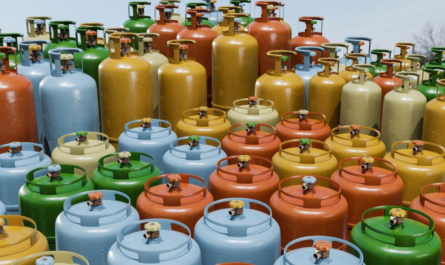The “Trenching – Soil Types” blog on Saety provides an overview of different soil classifications and their impact on trenching operations. It explains the various soil types, such as cohesive, granular, and stable rock, and discusses how each type affects trench stability and excavation safety. The blog emphasizes the importance of identifying soil types accurately to prevent trench collapses and ensure worker safety. It also covers best practices for assessing soil conditions and selecting appropriate protective systems during trenching.

Source :- Sun state equip
1. Understanding soil types in trenching is critical for safety; each soil behaves differently, affecting trench stability.
2. Trenching hazards increase significantly when soil conditions are not accurately identified.
3. There are four main soil types in trenching: Type A, Type B, Type C, and stable rock.
4. Type A soil, the most stable, includes clay and cemented soils, which can support steeper excavation walls.
5. Type B soil includes silt, sandy clay, and medium-dense granular soils. It’s less stable than Type A and requires more protective measures.
6. Type C soil, the least stable, includes gravel, sand, and loamy soil, needing extra caution due to its high risk of collapse.
7. Stable rock is the most secure but rarely encountered in regular trenching operations.
8. Proper identification of soil types for trenching safety is mandatory before excavation begins.
9. Use a visual test and manual test to assess soil conditions and classify soil type.
10. Soil moisture content can significantly impact its stability. Wet or saturated soil is more prone to collapse.
11. Trenching safety regulations require regular soil testing during prolonged excavations as conditions can change.
12. Always assume soil classification for trenching will be the least stable option if uncertain.
13. Protective systems for trenching include shoring, shielding, and sloping, tailored to the specific soil type.
14. Trench shielding protects workers from soil collapse but doesn’t prevent it.
15. Shoring systems support trench walls and are essential in trenches deeper than 5 feet.
16. When dealing with Type C soil, always slope trench walls or use robust shoring to prevent accidents.
17. Excavation safety for trenching requires continuous monitoring, especially during adverse weather conditions.
18. Keep heavy equipment away from the trench edge to avoid soil collapse in trenching.
19. Conduct daily inspections by a competent person in trenching safety to ensure the excavation remains secure.
20. Emergency response plans for trenching incidents should be in place and understood by all workers.
21. Train workers in recognizing trenching safety hazards related to different soil types.
22. Safe trenching practices include entering only when the trench has proper protective systems.
23. Wear appropriate personal protective equipment (PPE) such as hard hats, gloves, and boots when working in or around trenches.
24. Avoid working alone in a trench; always have a trenching safety buddy for emergency situations.
25. Remember, the key to trenching and excavation safety is thorough preparation and continuous vigilance.
These points ensure a comprehensive understanding of the role of soil types in trenching safety, covering identification, protective measures, and best practices to minimize risks.
“Start Your Website Journey Today – Exclusive Hostinger Discounts!”





